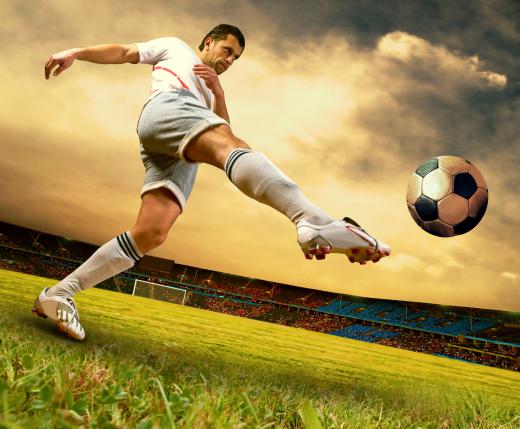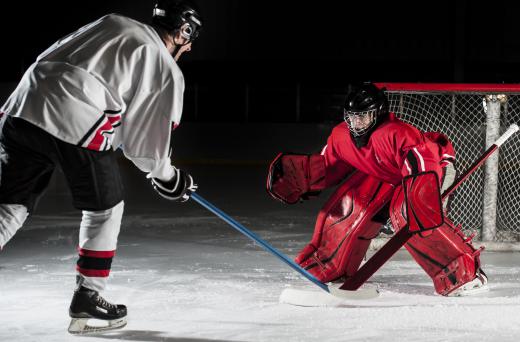Shin guards are safety equipment worn during a range of sporting activities. They protect a player's shins from harm from contact with a ball, puck, hockey stick, or other type of sports equipment. They also help to protect a player's shins from harm that could result from contact with another player. For example, during sports games like soccer, it is possible for one player to kick another player in the shin by accident; shin guards help absorb the brunt of such contact. Besides soccer, they may be worn for playing sports like hockey, football, and baseball.
Shin guards come in a range of sizes to suit players ranging from the tiniest recreational player to the professional sportsman. Typically, they are kept on the legs with Velcro® straps, and they are available in a range of color and style choices. To reduce injuries, many school teams have mandatory requirements for shin guards. Many non-school sports clubs require them as well.

Shin guards can be made of a variety of materials. Some are made from fiberglass; this type is designed to be lightweight yet sturdy, offering a significant amount of protection for the shins. Those that are made of foam rubber are lightweight, but they tend to offer less protection than fiberglass choices. Polyurethane choices are very heavy and sturdy; they may be chosen when a high level of impact protection is needed. Some people choose plastic shin guards because they are less expensive than other types, and they are often lightweight; however, they also tend to offer less impact protection.

The type of shin guards necessary for sporting activities may depend on the position you're playing. For example, if you are a soccer goalie, you may not need as sturdy shin protection, as you may be less likely to deal with impact from other players. However, if you are a hockey goalie, and you have to deal with pucks flying at you, you probably want as much protection possible.

If you are a defender, you may need very sturdy shin guards, as you may frequently deal with impacts from sporting equipment and tackles. Even midfielders need a significant amount of protection to deal with the impact possible when competing for the ball. Those who play forward positions may need lighter-weight guards, so they can run faster and move about more freely. Still, it is necessary to make sure the guards they choose provide an adequate level of protection.
